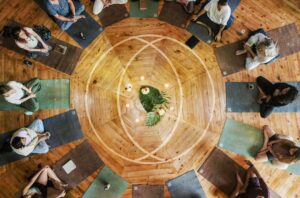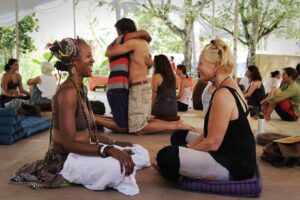‘NOOO!!!’
There comes a time when we all have to say it. Is it easy for you? Or, is there perhaps a flutter of adrenalin that passes through your heart at the mere thought of it?
Standing up for oneself should feel simple, but for many of us, it feels risky and challenging.
Anger might help, righteous indignance too. But when there is neither, and you are concerned about disappointing someone or being judged, does it get harder to say a simple ‘no’ with a smile?
For some, this isn’t a problem at all. They are quite clear about setting their boundaries, knowing what’s acceptable and what is not.
But others find themselves saying ‘yes’ when they would rather say ‘no’. And sometimes they do it without even realizing it.
How does it begin?
Imagine a baby who is just walking, and sees a little dog on the other side of the road. Mum had only turned around for a second, and when she looked back at him he was already leaning into a clumsy run towards it. She screams out ‘No!’ at the top of her lungs, and the child stops dead in its tracks. Phew!
The child is safe, yet a huge impression has been made. ‘No’ has an enormous impact, which from this point on becomes a new condition in life.
Sometimes the shoe is on the other foot.
I remember as a new grandfather watching my son cope with the refusal of his son. Timothy went through a stage when he would pronounce a resounding ‘no’ to most requests, regardless of their importance. He was perhaps two years old at the time, and he clearly enjoyed hearing himself. He explored it in different ways, playing with the shortness of the sound and the sense of power it gave him.
Demian would rarely admonish him, and thus began one of my first lessons as a grandfather. I wanted to see the young lad corrected, and put on the right course. As a product of British boarding school from the age of seven, my experience was that saying ‘no’ was decidedly risky and may incur disproportionate amounts of wrath in response. To see my little grandson with his head held high in defiance – and his father’s apparent acquiescence – was unsettling to me.
Reluctant to interfere, I bit my lip for a good while before commenting. I asked why the practice was allowed not only to continue but to flower into a mantra as the youngster stomped about the room on his strong little legs shouting like Napoleon. It was tempting to mistake his adamance for arrogance, yet of course, this spoke more of my own conditioning than his behavior.
Demian explained: ‘If I don’t allow him to say no now, he will find it hard later on. I don’t want him to associate the word with shame, and I want him to stand up for what he believes when he is older’.
That stopped me.
It certainly dovetailed with my own experience and accounted for the difficult feelings that came up for me when I would have to steel myself up to a clear ‘no’.
I reflected on how much easier life would have been if I had not had my ‘no’s’ trampled on by the often unreasonable voice of authority. It was one of the early steps of losing my personal power in the world. More importantly, I associated saying ‘no’ with the risk of being wrong, rejected and discarded. This was because of the deep wish to be loved, and an even deeper fear that I wasn’t lovable. This troubled me for decades, becoming an ever thicker mask that hid what I really wanted even from me, let alone anyone else! I thought it indecent, ungainly and abrupt to simply state what I wanted and when I saw others doing it for themselves I would feel a mix of envy, admiration, and irritation.
This helped me understand the importance for a child to have this very basic human right fostered, cultured and protected, as I wouldn’t have wished my own limitations passed on to another.
It was only recently when someone said to me: “Why don’t you think of saying ‘no’ with a smile?”, that I realized I was a long way away from being able to do that.
Instead, I would make the other person wrong to justify my ‘no’. I would manufacture an attitude that would bolster me. Or I’d burst through the shell of my own shame, blurting out my ‘no’ too urgently or strongly, and offend my victim more than I had feared in the first place.
Noticing the distance between my ‘no’s’ and a smile, it was clear that it was time to make a change. I began to meditate on this ‘gap’ that I sometimes lived in. As much of my meditation is on focusing on what is uncomfortable, this gap was the perfect place to begin as my brain cells were jiggled out of stasis towards the possibility of change.
The key to Alchemy Meditation is to stay with the insecurity of discomfort rather than coping with it or avoiding it in the hope of temporary relief. It’s not about just emptying the mind, but staying concentrated and alert, and paying firm and focused attention. What appears to be the most difficult place to be in, unexplainably becomes the most rich and fertile, often opening a doorway to new understandings that seemed impossible before.
The more I meditated the more I realized that it was only my point of view that made it difficult for me to say ‘no’. There wasn’t even a need to go into an analytical process to unravel it. It became a clear understanding – to the core – that the habit was simply unproductive, and once that was accepted – completely – then another awareness came into vision which shocked me into an immediate shift.
Saying an authentic ‘no’ to another person is speaking to the fullest potential of that person. Saying less than ‘no’, when that is what is being felt, actually reduces both the scope of the relationship and also the quality of presence I can offer. One could disguise it with a smile, but fundamentally it is dishonest. It diminishes the truth and potential of that moment but also reduces people to lesser beings than they really are. That’s unfair.
To give an authentic ‘no’ is honoring them in a simple direct way, giving clear information which they can process. It eliminates misunderstanding, mixed messages and thwarted relating as a result.
Since then I have practiced the ‘art’ of saying ‘no’, noticing and measuring my discomfort. It gets easier with time and practice, supported by the firm decision to do it at least three times a day. Now I notice it in others too, the shadow that crosses their face as they deny themselves what they may really need.
When we reduce our own authenticity, we encourage others to perceive us not as we really are, and we invest a lack of truth into our communication that is the foundation of unease – if not disease.






